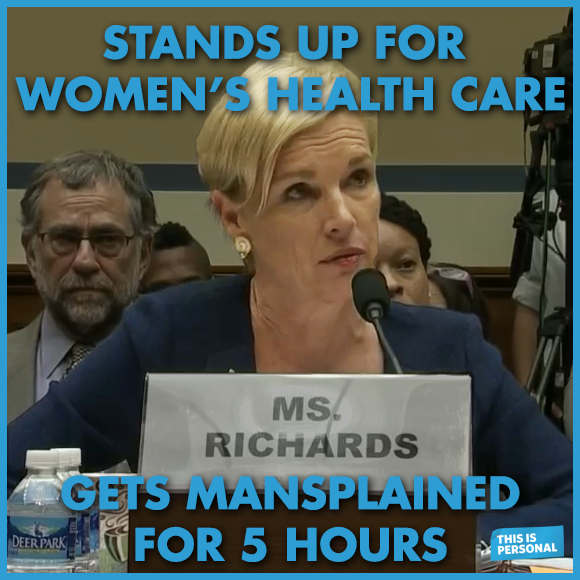Abortion rights, women of color, and LGBTQI+ people are under attack. Pledge to join us in fighting for gender justice.
The Long and Short of It: Short-Term Plans Have Bad Long-Term Consequences for Women’s Health and Economic Security


UPDATE: In early August, the Trump Administration finalized this harmful rule—expanding these “short-term” plans and undermining access to affordable, quality health insurance. Thankfully, Senator Baldwin is taking the lead against the Administration’s latest attempt to undermine the Affordable Care Act. And today, the Senate will vote on a petition brought by Senator Baldwin to overturn this harmful rule.
Short-term, limited-duration plans provide exactly the kind of coverage the name implies—short-term, stop-gap coverage of a temporary nature. For example, these plans have been used by people transitioning between jobs, but are not meant to serve as comprehensive long-term health care coverage. The benefits that they provide are generally pretty skimpy. With the passage of the Affordable Care Act (ACA), which has expanded access to robust coverage options, there is little utility for short-term plans. That’s why the Obama Administration issued final regulations limiting their duration to up to three months. But, as part of continuing efforts to undermine the ACA—including by passing a tax bill that guts the ACA’s requirement for individuals to have health insurance coverage, which helped to spread risk among the healthy and the sick and keep costs down—the Trump Administration is touting short-term plans as viable long-term coverage options. But, these plans are simply not comparable to robust, ACA-compliant plans designed to meet long-term health coverage needs. They’re bad for all consumers—and especially bad for women.
That’s why we submitted a letter in opposition to the Trump Administration’s recent attempt to make short-term plans . . . well, long-term—proposing extending their duration to up to one year. Extending the duration of short-term plans to up to a year—and even longer with renewability—will expose many consumers—particularly women—to risks from relying on coverage that will not meet their long-term health care needs, jeopardizing their health and economic security.
The short of it is that short-term plans are bad for women—and as noted in our letter of opposition to the Administration’s proposal, here are a few reasons why:
- They Don’t Provide Women the Coverage They Need: Unlike ACA-compliant plans, which must cover a set of Essential Health Benefits (EHB), short-term plans are not required to cover EHBs, leaving women without the health coverage that they need, like for maternity care, prescription drugs, or substance abuse or mental health services. The ACA’s EHB coverage requirement helped to remedy notable gaps in the health insurance market that left women without coverage for vital health services—and paying out-of-pocket for costly services like up to $50,000 for complicated deliveries. Yet, the Administration’s proposal fails to address short-term plans’ failure to cover the services that women need, which could result in more women enrolling in coverage that doesn’t meet their health needs.
- They Discriminate Against Women for Being Women: Federal law does not require short-term plans to include the ACA’s consumer protections, so many short-term plan issuers engage in discriminatory practices that negatively impact women, such as:
- Charging women more for coverage than men—a practice known as gender-rating, which, as we documented, cost women more than $1 billion annually pre-ACA;
- Requiring women to pay for preventive care women need, like certain preventive screenings; or
- Denying coverage to women because of pre-existing health conditions unique to women, like having had a Cesarean delivery, prior pregnancy, or breast or cervical cancer .
Extending the duration of short-term plans will expose more women to such discriminatory practices. Discrimination for any duration is unacceptable and extending the length of time that women could be exposed to such discriminatory practices under short-term plan coverage will have long-term consequences for women’s health and economic security. For example, many women may opt to forego coverage altogether rather than paying unanticipated costs when enrolled in short-term plans.
- They Discriminate Against Women with Health Conditions: ACA plans are prohibited from considering health conditions in setting health insurance coverage prices, but short-term plans are not. Many short-term plans require applicants to fill out extensive questionnaires so that they can identify any pre-existing or chronic health conditions. This means that the 67 million women and girls nationwide with pre-existing conditions, including women with chronic conditions who attempt to enroll in short-term plans will be vulnerable to higher costs or coverage denials. And short-term plans can even refuse to pay for services when consumers develop health conditions after they enroll—shifting costs to the sickest consumers.
- They Saddle Women with Health Care Costs: Women and other consumers who enroll in short-term plans are subjected to practices that expose them to high costs, including: annual caps or lifetime limits; high deductibles; no limits on out-of-pocket charges. For example, the ACA limits out-of-pocket costs to $7,530 for an individual for a year, but some short-term plans allow out-of-pocket costs to skyrocket to up over $20,000. For women who are more likely to live in poverty than men, make less than men, and are overrepresented in low-wage jobs, such costs can be debilitating. This is especially the case for women of color impacted by wage disparities—such as black women who make only 63 cents for every dollar paid to white men or Native women who make only 57 cents for every dollar made by a white man.
- They Will Destabilize the ACA Marketplaces for Women Remaining in Them: Expanding the duration and availability of short-term plans could result in healthy individuals leaving the ACA individual markets, while those with more health needs—likely many women who need robust ACA-compliant coverage—will remain in the ACA marketplaces. The resulting risk pool will lead to instability and higher costs for those remaining in it—which the Trump Administration even admits in its proposal—negatively impacting women least able to bear such costs. One study even estimates that, when the proposal’s changes take hold, premium costs will increase anywhere from 2.2 percent to 6.6 percent—and coupled with the end of the ACA provision requiring insurance coverage, premiums could skyrocket anywhere from 10.8 percent to 12.8 percent. Increased premium costs will lead many to go without coverage altogether—as another study projects that 8.5 million fewer people will have insurance coverage if the proposal becomes final than under current law.
Loss of coverage, high premiums, discrimination based on gender and health status—that sounds exactly like the individual health insurance market before the ACA. And expanding short-term plans, which lack ACA market plans’ consumer protections like cost controls, will only return women to the pre-ACA world. According to NWLC calculations, over 90 million non-elderly adult women nationwide now have health insurance coverage—with insured rates among women of color increasing by 15 percent from just 2013 to 2016. Yet, pushing individuals into reliance on short-term plans for long-term health coverage needs will only undermine these tremendous coverage gains for women.





